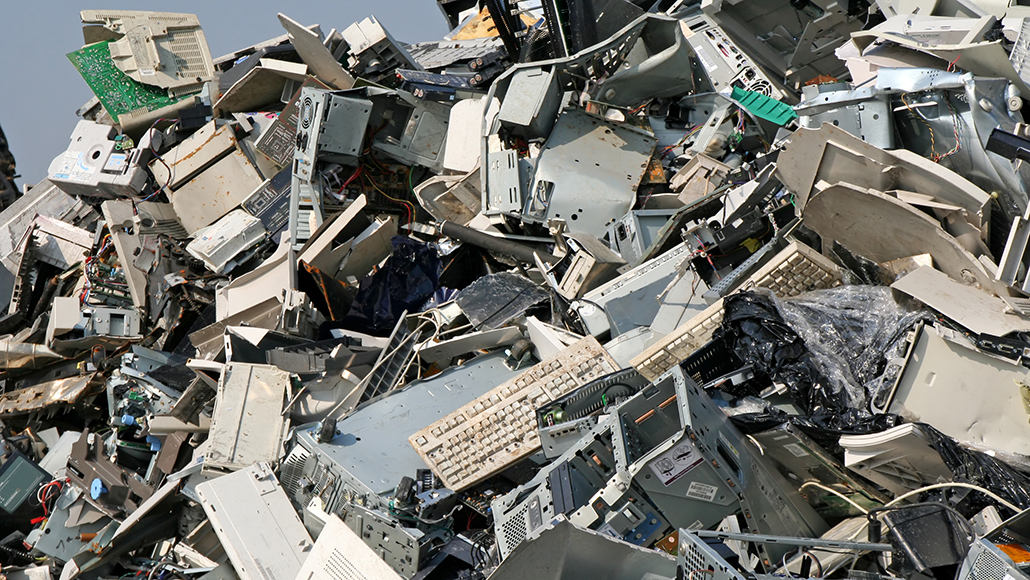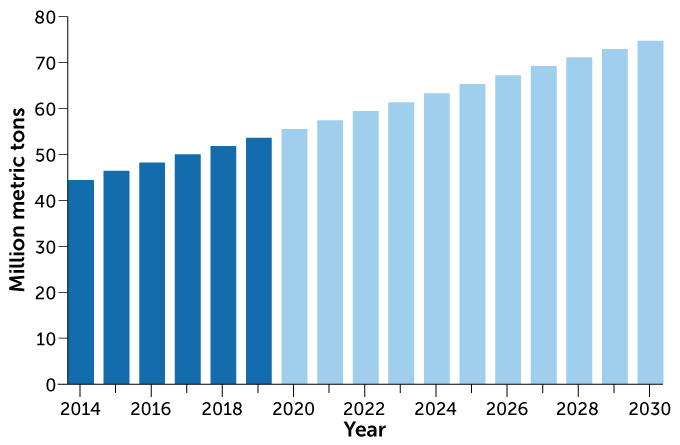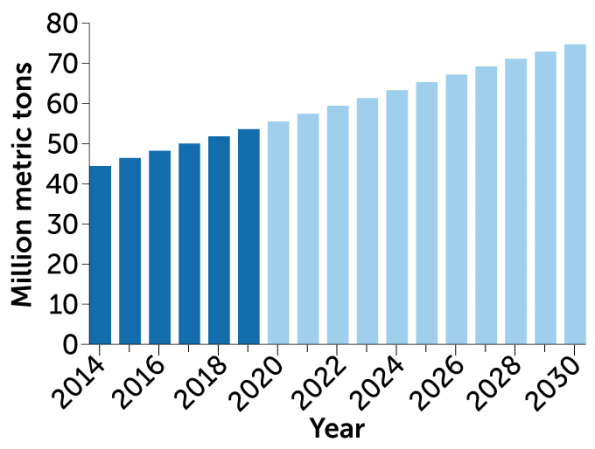Earth’s annual e-waste could grow to 75 million metric tons by 2030
A record 53.6 million tons of electronics were discarded in 2019

The global pileup of cast-off electronics, such as smartphones and laptops, is growing rapidly, a new report finds.
Lya_Cattel/E+/Getty Images
- More than 2 years ago
The planet’s hefty pile of discarded electronics is getting a lot heavier, a new report finds.
In 2014, the world collectively tossed an estimated 44.4 million metric tons of unwanted “e-waste” — battery-powered or plug-tethered devices such as laptops, smartphones and televisions. By 2030, that number is projected to grow to about 74.7 million tons, according to the Global E-Waste Monitor 2020. That’s roughly equivalent to eight times the weight of China’s Three Gorges Dam.
The findings come from a partnership formed in 2017 between the United Nations International Telecommunication Union, the International Solid Waste Association and other groups to track the accumulation of electronic debris. The projected e-waste for 2020 and other future years doesn’t include any economic consequences that might be related to the COVID-19 pandemic.
What a waste
The yearly amount of e-waste is projected to almost double in weight from 2014 (44.4 million metric tons) to 2030 (74.7 million tons). Actual data is shown in dark blue, and projected data is in light blue. These numbers are based on calculations of global consumption of electronics as well as on simulations that take into account both sales and product life spans. The projected e-waste for 2020 and other future years doesn’t include any economic consequences that might be related to the COVID-19 pandemic.
Global e-waste generated annually, 2014–2030


Source: Global E-waste Monitor 2020
Higher consumption rates of electronics, as well as shorter life cycles for many devices, are contributing to the rapid pileup. And most people also are not properly and safely recycling their devices, the report found. Of the 53.6 million tons of e-waste generated in 2019, only 9.3 million tons, or 17.4 percent, were recycled.
Discarded electronics can contain hazardous materials — such as cadmium and mercury in laptops and smartphones, and refrigerant chemicals like chlorofluorocarbons and hydrochlorofluorocarbons — that can leach into the environment (SN: 8/7/19; SN: 5/22/19). E-waste is also a source of plastic waste (SN: 4/5/18). What’s more, not recycling e-waste can contribute to global warming, the report notes, because humans are mining and processing new materials rather than reusing existing materials.
E-waste also contains so many valuable recoverable metals, such as iron, copper and gold, that it essentially represents an “urban mine,” the report states. The value of the raw materials in 2019’s e-waste could be as much as $57 billion — only about $10 billion of which was recovered through recycling.
Sign up for our newsletter
We summarize the week's scientific breakthroughs every Thursday.






